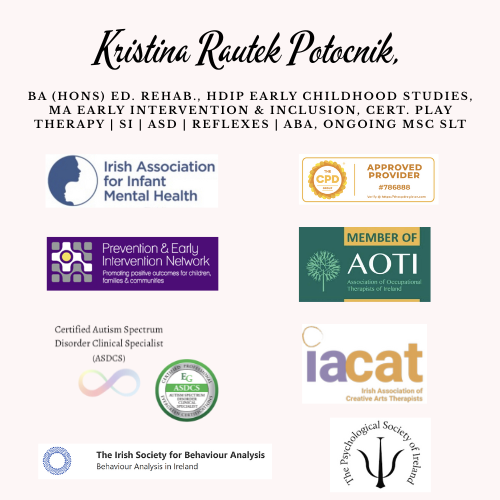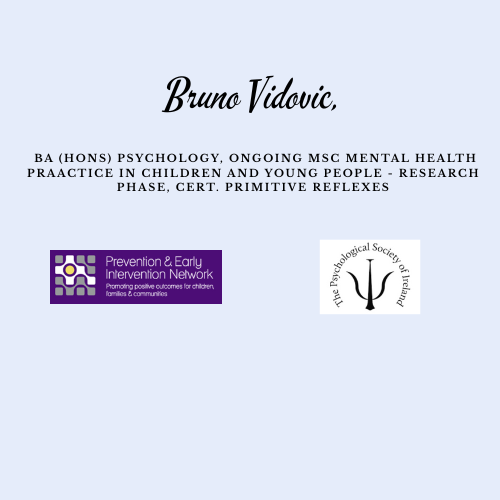From Storytime to Sensory Support: Using Books to Build Motor Skills in Young Children
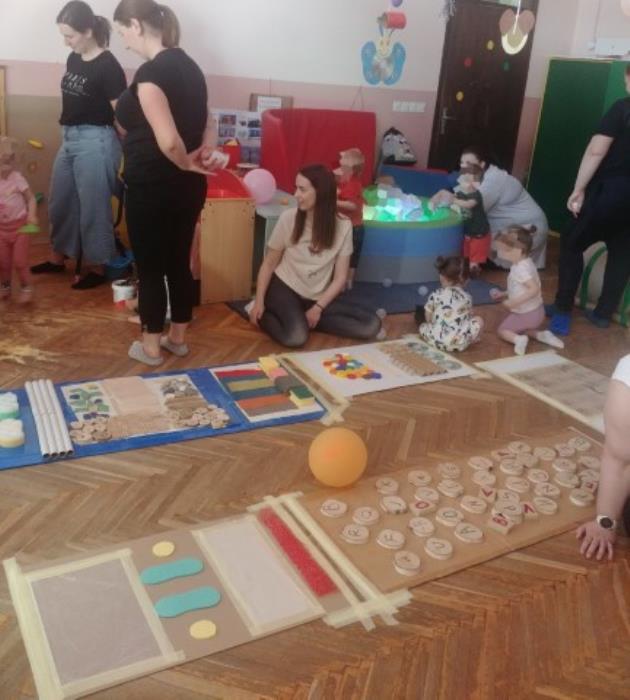
Author: Kristina Rautek Potocnik, BA (Hons) Ed. Rehab., HDip Early Childhood Studies, MA Early Intervention & Inclusion, Cert. Play Therapy | SI | ASD | Reflexes | ABA, ongoing MSc SLT
We often associate children’s books with language development, storytelling, and early literacy skills. And while that’s absolutely true, books can offer far more than just a boost in vocabulary. They can also be used as powerful tools for developing fine motor, gross motor, sensory-motor integration, cognitive skills, and self-regulation. For young children especially, learning happens best through movement. Their bodies are wired to explore the world through touch, sound, vision, movement, and interaction. Sitting still for long periods goes against their natural instincts, so expecting them to quietly listen during storytime can often lead to frustration for both the adult and the child.
That’s where the magic of sensory-motor storytelling comes in. By inviting movement into the reading experience, books become more than just stories—they become invitations to act, explore, and connect. A child might roar like a lion, stretch like a cat, crawl through an imaginary tunnel, or stomp like an elephant. With just a few simple ideas, storytime transforms into an active session that builds physical, emotional, and sensory skills.
Books can support many areas of development. They help build fine motor skills when children turn pages, point to pictures, or lift flaps. They support gross motor skills when children imitate postures, balance on one leg like a flamingo, or crawl like a bear. Visual scanning skills are practiced when children look for characters, colors, or objects on a page. Books can also teach emotional understanding, social interaction, and self-care skills like brushing teeth, getting dressed, or using the toilet. Cognitive development is supported when children are asked to recall story events, solve simple problems, or answer questions. And perhaps most importantly, storytime builds attention, listening, and regulation, especially when it becomes part of a predictable routine.
Choosing the right books for each age group helps make the most of this learning potential. For babies, black and white books can support early visual skills. Older babies enjoy textured or touch-and-feel board books, while toddlers benefit from books with bright colors and flaps to explore. Preschool children are especially drawn to short, rhyming stories that match their interests, while older children engage best with books that challenge their thinking just enough and reflect their passions. Movement-based books can be especially helpful for children who struggle to sit still. Rather than seeing their restlessness as a problem, these books offer a solution—by encouraging them to move and engage with the story physically.
Some excellent books that naturally promote movement include "From Head to Toe" by Eric Carle, which invites children to copy animal actions, or "We’re Going on a Bear Hunt" by Michael Rosen and Helen Oxenbury, which combines rhythm and action in a fun, repetitive adventure. Other engaging titles include "Barnyard Dance" by Sandra Boynton, "ABC Yoga" by Christiane Engel, "Move!" by Steve Jenkins and Robin Page, and "Jonathan and His Mommy" by Irene Smalls. These stories create natural opportunities for jumping, crawling, balancing, and exploring new movements in a playful and safe way.
Even if you’re supporting children online or through teletherapy, books remain a valuable resource. It’s helpful to ask families if they have physical copies of the books, or recommend checking them out from the library. When that’s not possible, recorded versions from platforms like YouTube can be shared, especially those that show the pages clearly. By muting the audio and reading the story yourself—or encouraging the child’s parent to read—you can slow down the pace and add meaningful movements or sensory prompts. There are also animated read-along platforms that make storytime engaging and interactive, with built-in comprehension and activity ideas.
Through years of working in preschool and early intervention, many rich activity ideas have emerged by simply building on the books that children love most. Repetition is comforting to children, and reading the same story over and over is developmentally normal—but that doesn’t mean adults can’t gently expand the experience by adding movement, sensory exploration, or fine motor tasks to keep things fresh and engaging. Creating your own themed book bundle is an easy and effective way to support multiple areas of development. For each book, you can plan one fine motor activity, one gross motor task, and one sensory-motor experience using simple, everyday materials from home or the classroom. These can be written up in handouts to share with families or posted in your learning space as a reminder of creative ways to use the stories.
The truth is, books don’t have to be quiet activities. They can be dynamic, playful, and full of energy. Storytime can include laughter, movement, imagination, and even a little sweat. Books can help children jump, roll, stretch, crawl, balance, breathe deeply, and self-regulate. They can support attention and language while also strengthening coordination and sensory integration.
So next time you pick up a book with a child, think beyond the words on the page. Invite the child to step inside the story—not just with their mind, but with their body. Let storytime move them. You may be surprised just how far a simple book can go in supporting a child’s overall development.
Latest Posts
- How children make sense of the world through their senses
- How your baby learns about the world through their senses
- Helping your child grow stronger through movement and play
- Understanding How Early Intervention Helps Children Learn, Move, and Connect
- How to Recognise Tactile Defensiveness and Help Your Child Feel Safe
- Understanding Feeding Challenges and How to Support Your Child at Home
- Let’s Talk Sitting: Exploring Floor Seating Options
- Retained Primitive Reflexes: The Hidden Cause Behind Developmental Struggles
- Where Curiosity Blossoms: How Children's Play Nurtures Growth for All
- Helping Your Child Through Stress: A Gentle Guide for Parents
- Sweet Little Lies – How to Recognise and Respond with Care
- Chores Are More Than Just Tasks – They’re a Tool for Growing Independence, Focus, and Confidence
- How to Help Children Develop Emotional Intelligence
- Blending Technology and Care: How VR Meta Quest Supports Children at NeuroNest
- A simple guide for parents who want to raise confident, happy children
- Setting Boundaries with Love: A Simple 3-Step Guide for Parents
- Understanding Behavior Through the Nervous System
- A Compassionate Lens on Dysregulation in Non-Speaking Autistic Individuals
- Supporting Development Through Movement: The Role of the Swing in Early Intervention
- Blending Tradition and Innovation: How NeuroNest Supports Your Child’s Unique Journey
- When Movement Meets Innovation: Supporting Child Development with GoBalance
- Why Visual Perception Matters for Everyday Life and Development
- Benefits of Chess in Early Intervention
- Building Healthy Nutrition from the Start
- A Journey Back to Your True Self
- Supporting Your Child’s Hand Skills for Confident Writing
- Blending the Best of Both Worlds
- Helping Toddlers Eat Well: A Parent’s Guide
- Why Tummy Time Matters for Your Baby's Development
- Helping Your Child Build Everyday Independence
- Who Are the Disconnected Kids?
- From First Tries to Automatic Habits: Understanding the Stages of Skill Learning
- Why a Child’s Level of Alertness Matters for Memory and Learning
- Early brain development starts before birth
- Why Slowing Down, Adapting Tasks, and Adding Breaks Helps Children Learn Better
- Why ADHD, Autism, Dyslexia and Other Challenges Need a New Approach
- The surprising power of copying in child development
- Books are more than just language tools—they’re powerful allies in sensory and motor development.
- Rethinking sensory support: moving beyond expensive rooms toward everyday understanding.
- Understanding how fear develops in a child’s brain
- Understanding how an early baby reflex can affect your child’s daily life
- A gentle start into baby development through movement and bonding
- A child-centred, research-informed approach that uses the power of play to support communication, emotional regulation, motor development, and meaningful growth from infancy to twelve years.
Our Partners

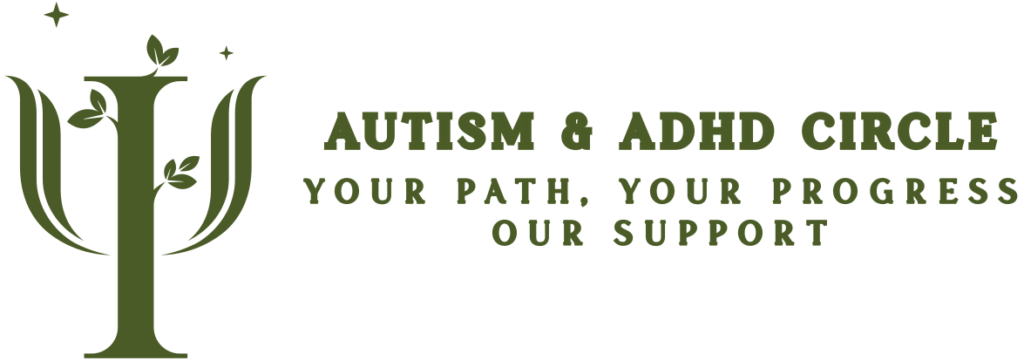

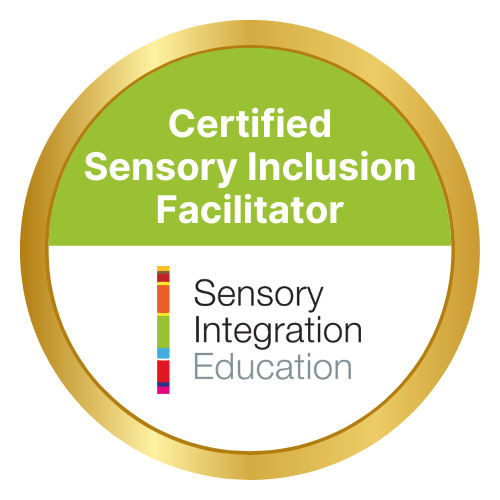
Our Memberships
